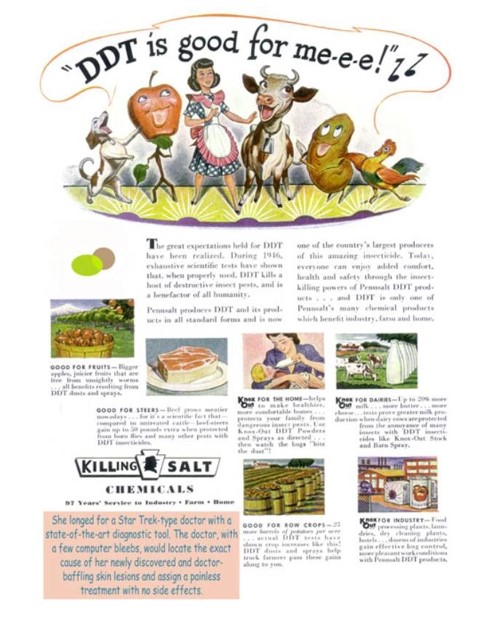Why do we choose to use harmful chemicals?
This week Erin Brockovich writes another opinion piece in the guardian newspaper[1]. Erin Brockovich is an American legal clerk, consumer advocate, and environmental activist probably best known for the film in 2000, with the same name, that featured Julia Roberts.
She writes about water quality issues in America “ As if poisoned water wasn’t a big enough issue….the last 6 years have been the hottest on record. As our climate changes..we are seeing greater strains on our water supplies and infrastructure.” A point raised in the article states that we only know what is present in the water if we monitor for it.
In the 1940s and ’50s dichlorodiphenyltrichloroethane, a pesticide known as DDT, was used to prevent the spread of malaria and typhus in several parts of the world. Rachel Carson highlighted that DDT was toxic to humans and the environment in her famous book, Silent Spring. DDT was banned in the U.S. in 1972. Before that, it was sprayed in American neighbourhoods to suppress insect populations and DDT was even marketed to housewives.
Today many chemicals like PFOA (perfluorooctanoic acid) and PFOS (perfluorooctanesulfonate) for example, are not routinely tested for, and if present could be causing health issues.
In Europe these and other chemicals are starting to be considered – though the approach to measuring them requires a lengthy process, of determining what chemicals are deemed a priority for monitoring purposes. It is impossible to monitor for every chemical – with over 40 chemicals produced every hour. Many chemicals will reach our waters and may have environmental and health related impacts. So what is the solution? How can countries reduce the chemical burden in the waterways?
Everyday activities in the home, gardens, communities involve chemical products. Many of these will end up in the surface waters and perhaps even in our drinking water. A key message that Brockovich leaves us with, is to ask questions. Ask questions about what is entering our waterways and who has the responsibility of protecting or restoring them.
We might ask the question – do we need to use glyphosate on every verge and roadway to reduce weeds? Instead can we divert funds to physically remove weeds and protect waterways from runoff of this dangerous pesticide. We might ask ourselves, do we need these chemicals in our daily lives. If we knew the impact of them on our ecosystem, we would all ask: Why do we still use so many products that contain harmful chemicals?
[1] https://www.theguardian.com/commentisfree/2020/aug/24/the-us-is-in-a-water-crisis-far-worse-than-most-people-imagine

